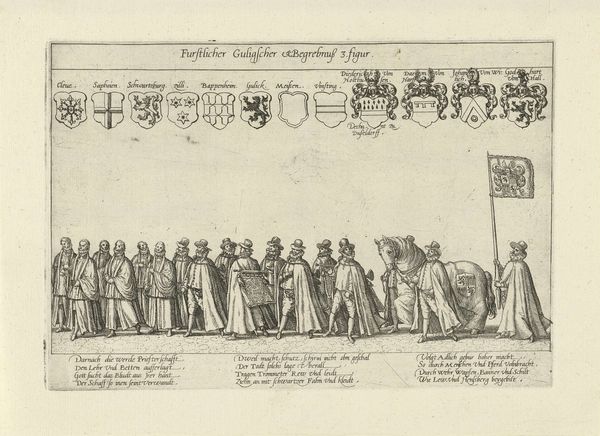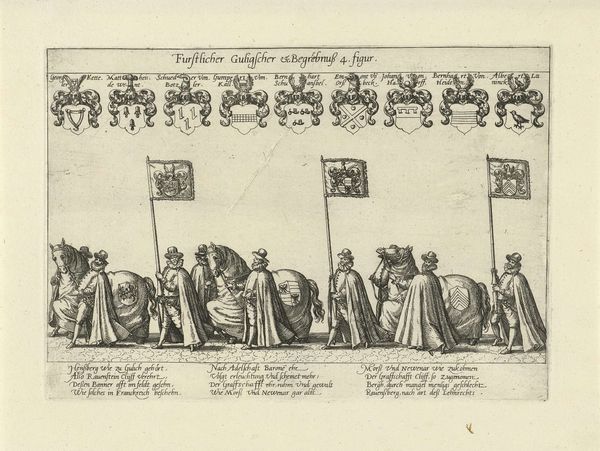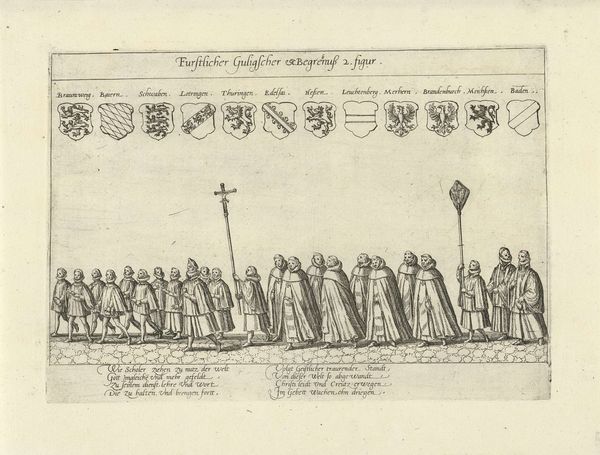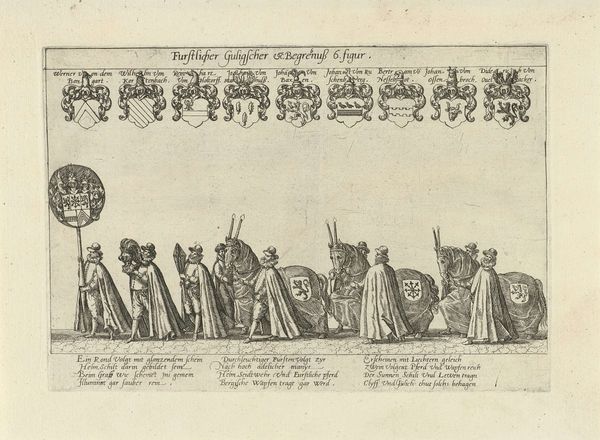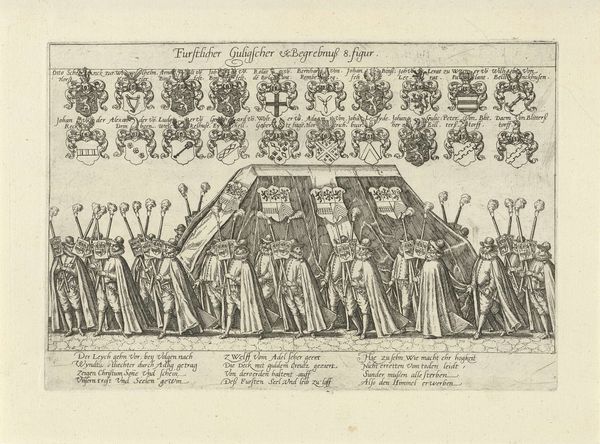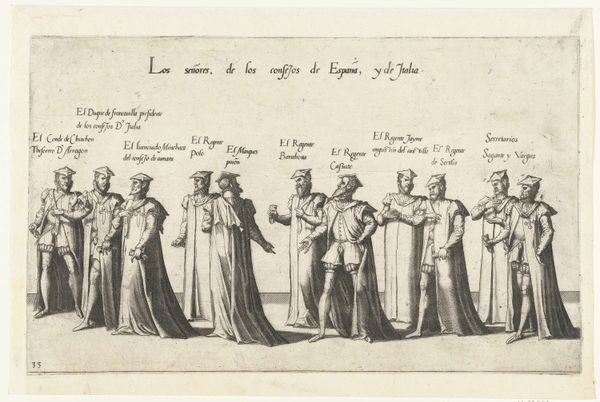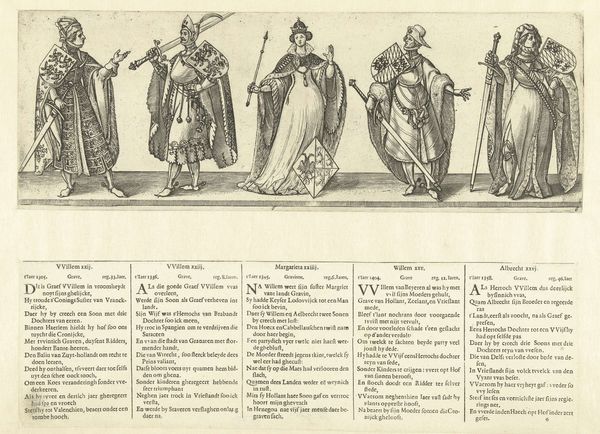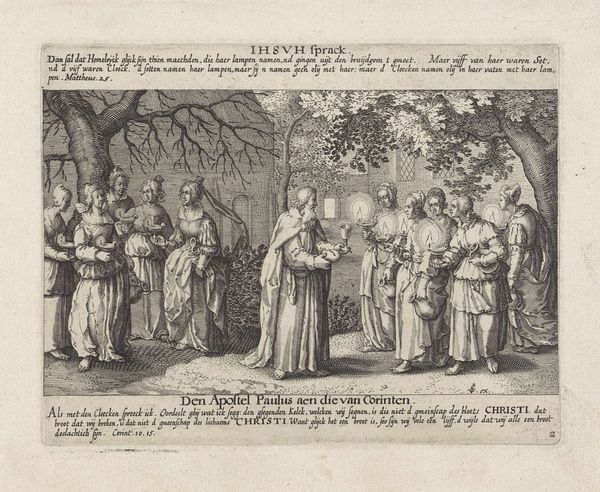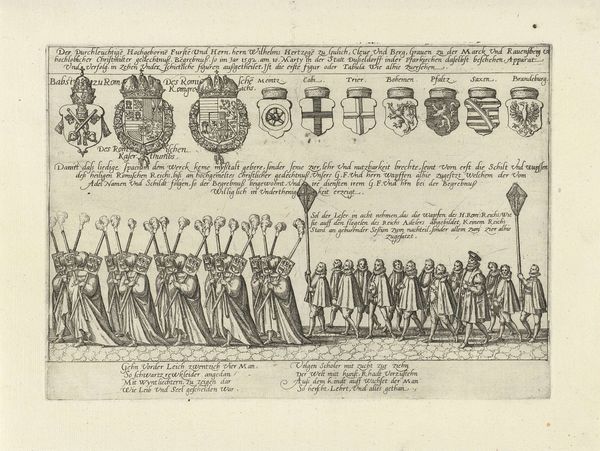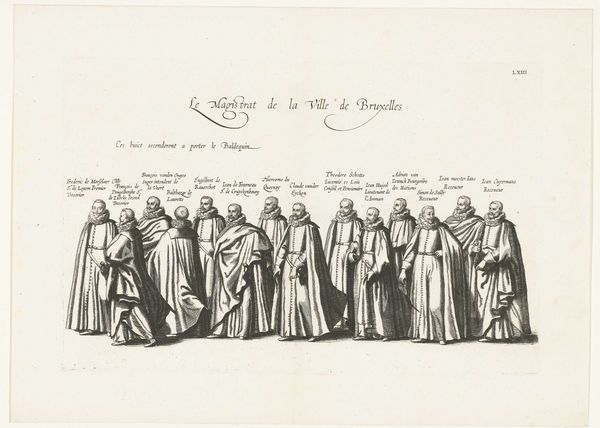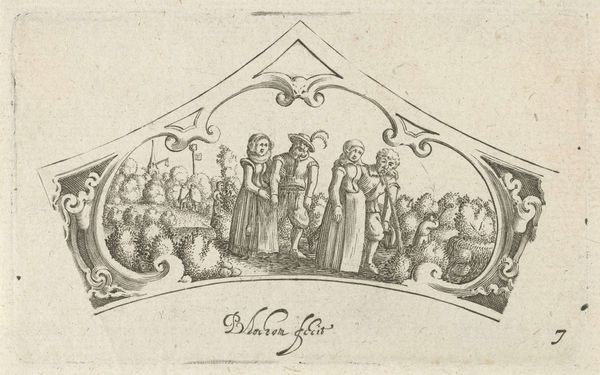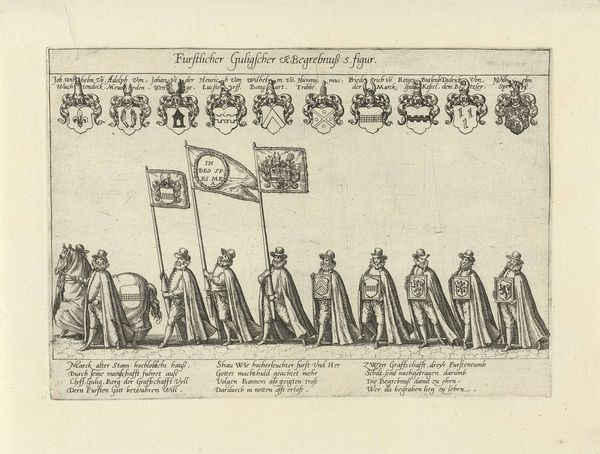
print, engraving
#
portrait
#
baroque
# print
#
landscape
#
figuration
#
genre-painting
#
history-painting
#
engraving
Dimensions: height 180 mm, width 258 mm
Copyright: Rijks Museum: Open Domain
Curator: Looking at this engraving, "Begrafenisstoet met edelen", or "Funeral Procession with Nobles," made around 1592 by Frans Hogenberg and residing here at the Rijksmuseum, I'm immediately struck by its intense linearity. It feels… stiff. Editor: Stiff? It seems rather formal, almost diagrammatic, yes, but I read the regimented rows and precise hatching as deliberate. Consider the upper registers. Dozens of heraldic shields are stacked neatly, symbols of lineage above a parade of figures, as if to suggest strict codes of rank and protocol. The artist underscores the importance of heraldry. Curator: I see the visual hierarchy, yes, but all those little crests give me a headache! Each tiny element competes for attention and detracts from the mourners depicted below, don't you think? They’re all dressed the same; where is the individualized experience? Where's the emotion? Editor: Individual experience might be secondary. It is crucial to remember that these types of prints were instruments of power and commemoration. Observe how each member is distinguished with the formal uniform, thereby elevating each figure by symbolizing their affiliation to social standing. This careful, formalized approach doesn’t negate emotion; it contains and elevates it, wouldn't you agree? Curator: I see your point, and how it served as an official record—an almost historical document rather than an outpouring of personal feelings. So, those cloaked figures gain individuality and are distinguished in our eye by their participation within this society of nobility. Editor: Precisely. It's a performance of social cohesion—a Baroque choreography, captured through Hogenberg's precise tools. It invites you, perhaps encourages, one to decode it rather than simply view it, transforming something mournful into a demonstration of structured order. Curator: Now I understand—I've shifted perspectives here. I came thinking stiff, now I am feeling sturdy! Thanks to that careful order you uncovered for me, this work is less alienating. It's less about individual expression, as I initially sought, and more about reinforcing and documenting societal foundations through art. Editor: Indeed. Analyzing artworks often comes down to such a shift in perspective; the formalism is the code, in a way, inviting new readers to join the ranks.
Comments
No comments
Be the first to comment and join the conversation on the ultimate creative platform.
